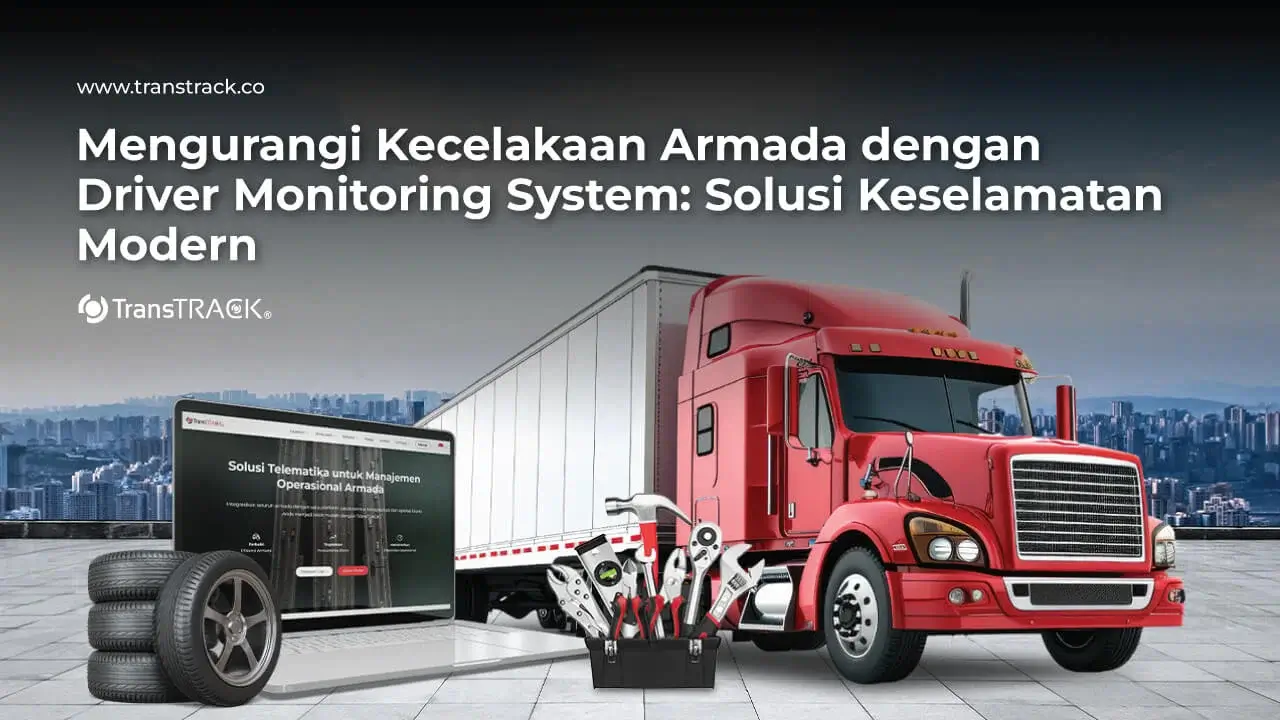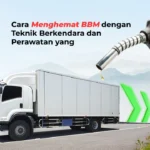Meningkatkan Kinerja Armada melalui Teknologi TransTRACK: Panduan Preventive Maintenance
Diposting pada Februari 11, 2025 oleh Nur Wachda Mihmidati

Dalam era persaingan bisnis transportasi yang semakin ketat, pengelolaan armada yang optimal menjadi salah satu kunci utama kesuksesan operasional. Preventive maintenance atau perawatan preventif telah terbukti menjadi strategi efektif untuk menjaga kendaraan selalu dalam kondisi prima, mengurangi downtime, dan menekan biaya perbaikan mendadak. Dengan perawatan berkala yang terstruktur, perusahaan tidak hanya mampu mengantisipasi kerusakan sebelum terjadi, tetapi juga meningkatkan keamanan dan efisiensi armada secara keseluruhan.
Memanfaatkan teknologi digital seperti TransTRACK, perusahaan dapat melakukan evaluasi kondisi kendaraan secara real-time, menjadwalkan perawatan otomatis, serta memantau performa armada melalui sistem Fleet Management yang terintegrasi. Pendekatan ini tidak hanya memberikan visibilitas penuh terhadap kondisi kendaraan, tetapi juga mendukung pengambilan keputusan strategis yang dapat mengoptimalkan produktivitas dan daya saing bisnis di industri transportasi.
Apa itu preventive maintenance dalam manajemen armada?
Preventive maintenance adalah strategi perawatan terjadwal pada kendaraan dalam manajemen armada yang bertujuan mendeteksi dan menangani masalah sejak dini sebelum berkembang menjadi kerusakan serius. Pendekatan ini meliputi pemeriksaan rutin seperti penggantian oli, pengecekan sistem rem, dan inspeksi mesin secara menyeluruh. Dengan perawatan berkala, perusahaan dapat mengoptimalkan kinerja armada, memperpanjang umur kendaraan, serta mengurangi risiko downtime yang dapat mengganggu operasional.
Sebagai contoh, sebuah perusahaan cargo menerapkan sistem manajemen armada digital untuk mencatat jadwal perawatan dan riwayat perbaikan setiap kendaraan, dengan pemeriksaan rutin dilakukan setiap 10.000 km atau 3 bulan. Selain itu, pengemudi dilatih untuk segera melaporkan gejala awal kerusakan, sehingga tim teknis dapat menindaklanjutinya dengan cepat. Hasil dari penerapan preventive maintenance ini adalah pengurangan downtime hingga 20% dan penghematan biaya perbaikan mendadak sebesar 30%, sekaligus meningkatkan keselamatan dan keandalan operasional armada.
Apa saja manfaat preventive maintenance untuk kendaraan armada?
Preventive maintenance memberikan keuntungan signifikan dengan memastikan kendaraan selalu dalam kondisi optimal sehingga operasional armada berjalan lancar. Berikut poin-poin manfaat utamanya:
Mengurangi Downtime Kendaraan
- Pemeriksaan rutin memungkinkan identifikasi masalah kecil sebelum berkembang menjadi kerusakan serius.
- Perawatan terjadwal memastikan kendaraan selalu siap operasional sehingga mengurangi waktu henti.
Efisiensi Biaya Operasional
- Intervensi dini pada masalah teknis mencegah biaya perbaikan mendadak yang lebih tinggi.
- Investasi dalam preventive maintenance menghasilkan penghematan jangka panjang dengan menghindari kerusakan besar.
Keamanan Pengemudi dan Armada
- Perawatan berkala menjaga agar sistem kendaraan seperti rem, mesin, dan suspensi selalu dalam kondisi prima.
- Pengurangan risiko kegagalan mekanis meningkatkan keselamatan pengemudi dan mencegah kecelakaan.
Studi Kasus:
Sebuah perusahaan rental kendaraan menerapkan program preventive maintenance dengan jadwal perawatan mingguan dan inspeksi menyeluruh setiap 1.500 km. Pengemudi dilatih untuk segera melaporkan gejala awal kerusakan, dan data perawatan dianalisis untuk memantau performa kendaraan. Hasilnya, perusahaan berhasil menurunkan downtime kendaraan sebesar 15% serta mengurangi biaya perbaikan mendadak hingga 25%, yang secara keseluruhan meningkatkan keandalan armada dan kepuasan pelanggan.
Perbedaan Preventive Maintenance vs. Corrective Maintenance vs. Predictive Maintenance
Berikut perbedaan antara preventive, corrective, dan predictive maintenance:
Preventive Maintenance
- Dilakukan secara terjadwal berdasarkan waktu atau jarak tempuh.
- Bertujuan untuk mencegah kerusakan dengan melakukan perawatan rutin seperti penggantian oli dan pemeriksaan sistem secara berkala.
- Meminimalkan downtime dengan mendeteksi masalah sebelum menimbulkan kegagalan.
Corrective Maintenance
- Dilakukan setelah terjadinya kerusakan atau kegagalan.
- Bersifat reaktif, dimana perbaikan dilakukan setelah masalah muncul.
- Seringkali mengakibatkan downtime yang lebih lama dan biaya perbaikan yang lebih tinggi karena kerusakan sudah terjadi.
Predictive Maintenance
- Menggunakan teknologi pemantauan (sensor, analisis data) untuk memprediksi kapan kerusakan kemungkinan akan terjadi.
- Perawatan dilakukan tepat waktu berdasarkan kondisi aktual, bukan sekadar jadwal tetap.
- Mengoptimalkan waktu dan biaya perawatan serta mengurangi downtime secara signifikan dengan mengantisipasi kegagalan sebelum terjadi.
Langkah-Langkah Mengimplementasikan Preventive Maintenance dalam Armada
Berikut adalah langkah-langkah implementasi preventive maintenance dalam armada:
Sebelum memulai, TransTRACK memberikan solusi terpadu yang membantu perusahaan mengelola dan memantau kondisi armada secara real-time sehingga setiap langkah preventive maintenance dapat dijalankan secara tepat dan efisien.
Evaluasi Kondisi Armada
TransTRACK menyediakan fitur analisis kondisi armada dengan mengintegrasikan data telematika dan riwayat perawatan kendaraan. Hal ini memungkinkan perusahaan untuk menilai kondisi setiap kendaraan secara mendetail dan menentukan prioritas perawatan.
Membuat Jadwal Preventive Maintenance
Dengan modul penjadwalan otomatis, TransTRACK dapat mengatur jadwal perawatan berdasarkan kilometer tempuh atau waktu tertentu. Fitur notifikasi dan reminder memastikan setiap kendaraan mendapatkan perawatan tepat waktu sehingga mengurangi risiko kerusakan mendadak.
Menggunakan Teknologi Fleet Management System (FMS)
Produk TransTRACK FMS memberikan visibilitas penuh terhadap armada melalui pelacakan real-time, monitoring kondisi kendaraan, dan integrasi data perawatan. Hal ini memudahkan manajemen untuk mengambil keputusan berbasis data serta meningkatkan efisiensi operasional.
Menyiapkan Tim dan SOP Perawatan Armada
TransTRACK mendukung pembuatan Standard Operating Procedure (SOP) dan penugasan tim perawatan melalui dashboard terintegrasi. Fitur kolaborasi dan reporting memungkinkan setiap anggota tim mengikuti prosedur yang telah ditetapkan sehingga perawatan berjalan konsisten dan terdokumentasi.
Monitoring dan Evaluasi Preventive Maintenance
Dengan fitur pelaporan dan analitik, TransTRACK membantu memantau kinerja preventive maintenance secara berkala. Data mengenai downtime, biaya perbaikan, dan efektivitas perawatan dapat diakses secara real-time, sehingga manajemen dapat melakukan evaluasi dan penyesuaian strategi perawatan dengan cepat.

Sebagai kesimpulan, preventive maintenance merupakan kunci untuk mengoptimalkan kinerja armada dengan mengurangi downtime, menekan biaya operasional, dan meningkatkan keselamatan pengemudi serta kendaraan. Dengan menerapkan langkah-langkah seperti evaluasi kondisi armada, penjadwalan perawatan yang tepat, penggunaan teknologi Fleet Management System, serta penyiapan tim dan SOP yang konsisten, perusahaan dapat memaksimalkan efisiensi dan produktivitas operasional.
TransTRACK hadir sebagai solusi komprehensif yang mengintegrasikan seluruh aspek preventive maintenance ke dalam satu platform canggih. Jangan biarkan masalah kecil berkembang menjadi kerusakan besar—optimalkan manajemen armada Anda dengan TransTRACK dan rasakan peningkatan performa serta penghematan biaya yang signifikan. Hubungi kami sekarang untuk demo gratis dan temukan bagaimana TransTRACK dapat membantu perusahaan Anda mencapai efisiensi operasional terbaik!
Postingan Terbaru
Topik :
 English
English









